FOODS
at a
GLANCE Easy Reference Guide
A-Z Foods, Spices, Herbs for Health Tina M. Rattan, DNM Doctor of Natural Medicine and Traditional Naturopathy, Educator, Inspirational Speaker, Speech-Language Pathologist Copyright 2017 Tina M. Rattan, DNM. All rights reserved. No part of this book may be reproduced, stored, or transmitted by any meanswhether auditory, graphic, mechanical, or electronicwithout written permission of both publisher and author, except in the case of brief excerpts used in critical articles and reviews. Unauthorized reproduction of any part of this work is illegal and is punishable by law.
ISBN: 978-1-4834-6265-3 (sc) ISBN: 978-1-4834-6267-7 (hc) ISBN: 978-1-4834-6266-0 (e) Library of Congress Control Number: 2016920260 Because of the dynamic nature of the Internet, any web addresses or links contained in this book may have changed since publication and may no longer be valid. The views expressed in this work are solely those of the author and do not necessarily reflect the views of the publisher, and the publisher hereby disclaims any responsibility for them. Any people depicted in stock imagery provided by Thinkstock are models, and such images are being used for illustrative purposes only. Certain stock imagery Thinkstock. Lulu Publishing Services rev. date: 01/19/2017 CONTENTS I wish to thank my wonderful family, close friends, and fellow kindred spirits in their contribution to the essence and spice of life! Peace, love, and blessings to all! ENJOY!!!!! The format for this reference guide is as follows: Food items *Properties (such as antioxidant, anti-inflammatory) *High in components (such as fiber) *Low in components (such as calories) *Contains major components (such as phytonutrients, vitamins, minerals, trace minerals) Beneficial Effects Possible Adverse Effects *Note: Serving Size: in cups/grams/ounces, etc.
Per servingcalories, calories from fat, the following in milligrams (mg) or grams (g) and % daily value: total fat, saturated fat, trans fat, cholesterol, sodium, total carbs, dietary fiber, sugar, protein, vitamin A, vitamin C, calcium, iron. Daily values are based on a 2,000 calorie diet. *NOTE: Nutritional data was obtained from: http://nutritiondata.self.com/facts The provided information is not all inclusive. The purpose of this book is to highlight pertinent details and to provide nutritional values for individuals to make informed healthy choices. *A word of caution: certain foods and their unique physiological and biological content of vitamins, minerals, phytonutrients, etc., may interfere with various medications and medical conditions. *NOTE: This information is not designed to diagnose or treat medical conditions. *NOTE: This information is not designed to diagnose or treat medical conditions.
FOODS AT A GLANCE Easy Reference Guide A-Z Foods, Spices, Herbs for Health This book is designed to provide quick and easy access to attributes of specific foods, spices, and herbs for individuals to make informed, healthy choices. Included are properties or components of these items, such as antioxidant, anti-inflammatory, antibacterial; nutritional information, including calories, carbohydrates, protein, vitamins, minerals; beneficial effects ; possible adverse effects ; serving size information . Some foods contain various vitamins and minerals that have a synergistic effecta balancing effect depending on the bodys needs. Specific components may help regulate blood sugar by raising it if needed, or by lowering blood sugar if that is the bodys particular requirement. The same is true for regulation of blood pressure, hormonal balance, etc. Several of these synergistic effects or combinations of various vitamins and minerals are enhanced through bioavailability.
This is when specific features react with other aspects for the body to receive nutritional health benefits. For example:
- 1.) Potassium and sodium work synergistically to help regulate blood pressure. Potassium acts as both a mineral and electrolyte. It activates enzymes that help with energy and contraction of smooth, cardiac, and skeletal muscles.
- 2.) Antioxidants also work synergistically, each with its own distinctive features and contributions to overall health. Phytochemicals in fruits and vegetables may contain antibacterial and/or antiviral properties that help stimulate ones immune system.
- 3.) Pairing iron-rich foods with those high in copper or vitamin C facilitates iron absorption in the body to prevent anemia. Pistachios are high in copper and help the body absorb iron from other food sources.
Lemon juice is high in vitamin C and aids iron absorption when paired with spinach, a good source of iron.
- 4.) Black pepper is a flavor additive to foods; it also aids with availability of beneficial components of other herbs to various parts of the body. Components in pepper may aid with digestion by increasing enzymatic action. Piperine, a component of pepper, facilitates absorption of beta-carotene, B vitamins, and selenium.
Certain food items are included because of frequency of consumption and known health benefits regarding healthier lifestyle choices. Food is best eaten in its natural state, or as near to its natural state, when possible. Cooking destroys some of foods natural enzymes, vitamins, and nutrients. (See Possible Adverse Effects and potential *Note segments of each food item.) Properties or components of food items may interfere with certain doctor-prescribed medications. (See Possible Adverse Effects and potential *Note segments of each food item.) Properties or components of food items may interfere with certain doctor-prescribed medications.
An example is spinach, which is high in vitamin K. Foods high in vitamin K may interfere with medications such as blood thinners (Coumadin, Warfarin, etc.). Additionally, some foods, spices, and herbs may be toxic in large doses, such as cinnamon. Cinnamon is best consumed in moderation. It is recommended individuals consult with a healthcare professional regarding various medications, medical conditions, and specific food items.  Adzuki (Aduki) Beans *Propertiesdiuretic, detoxifying *High in vitamin B9 (folate), fiber, manganese *Low in fat, cholesterol, sodium *Contains vitamins B1 (thiamine), B2 (riboflavin), B3 (niacin), B5 (pantothenic acid), B6 (pyridoxine), protein, calcium, iron, magnesium, phosphorus, potassium, zinc, copper, manganese, molybdenum, Omega-6 fatty acids Beneficial Effects *stabilizes cholesterol *beneficial for heart health *beneficial for weight loss *helps prevent birth defects *boosts bone health *aids in digestion *beneficial for energy *regulates blood pressure *helps detoxify the body/beneficial for the liver Possible Adverse Effects *adzuki beans are not known as an allergenic food.
Adzuki (Aduki) Beans *Propertiesdiuretic, detoxifying *High in vitamin B9 (folate), fiber, manganese *Low in fat, cholesterol, sodium *Contains vitamins B1 (thiamine), B2 (riboflavin), B3 (niacin), B5 (pantothenic acid), B6 (pyridoxine), protein, calcium, iron, magnesium, phosphorus, potassium, zinc, copper, manganese, molybdenum, Omega-6 fatty acids Beneficial Effects *stabilizes cholesterol *beneficial for heart health *beneficial for weight loss *helps prevent birth defects *boosts bone health *aids in digestion *beneficial for energy *regulates blood pressure *helps detoxify the body/beneficial for the liver Possible Adverse Effects *adzuki beans are not known as an allergenic food.  Adzuki (Aduki) Beans *Propertiesdiuretic, detoxifying *High in vitamin B9 (folate), fiber, manganese *Low in fat, cholesterol, sodium *Contains vitamins B1 (thiamine), B2 (riboflavin), B3 (niacin), B5 (pantothenic acid), B6 (pyridoxine), protein, calcium, iron, magnesium, phosphorus, potassium, zinc, copper, manganese, molybdenum, Omega-6 fatty acids Beneficial Effects *stabilizes cholesterol *beneficial for heart health *beneficial for weight loss *helps prevent birth defects *boosts bone health *aids in digestion *beneficial for energy *regulates blood pressure *helps detoxify the body/beneficial for the liver Possible Adverse Effects *adzuki beans are not known as an allergenic food.
Adzuki (Aduki) Beans *Propertiesdiuretic, detoxifying *High in vitamin B9 (folate), fiber, manganese *Low in fat, cholesterol, sodium *Contains vitamins B1 (thiamine), B2 (riboflavin), B3 (niacin), B5 (pantothenic acid), B6 (pyridoxine), protein, calcium, iron, magnesium, phosphorus, potassium, zinc, copper, manganese, molybdenum, Omega-6 fatty acids Beneficial Effects *stabilizes cholesterol *beneficial for heart health *beneficial for weight loss *helps prevent birth defects *boosts bone health *aids in digestion *beneficial for energy *regulates blood pressure *helps detoxify the body/beneficial for the liver Possible Adverse Effects *adzuki beans are not known as an allergenic food.
However, eating too many adzuki beans at one time may cause gas discomfort for some individuals. Serving Size: one cup cooked adzuki beans, without salt230 g. Per serving: calories294, calories from fat2, total fat0 g (0% daily value), saturated fat0 g (0%), trans fat, cholesterol0 mg (0%), sodium18 mg (1%), total carbs57 g (19%), dietary fiber17 g (67%), sugars0, protein17 g, vitamin A0%, vitamin C0%, calcium6%, iron26%. Alfalfa Sprouts *Propertiesanti-inflammatory, antioxidant *High in vitamins B1 (thiamine), B2 (riboflavin), B5 (pantothenic acid), B9 (folate), C, K, fiber, iron, magnesium, phosphorus, zinc, copper, manganese *Low in fat, calories, sodium, cholesterol *Contains phytoestrogens, saponins, canavanine (an amino acid), vitamins A, B3 (niacin), B6 (pyridoxine), E, protein, choline, betaine, calcium, potassium, selenium, Omega-3 fatty acids, Omega-6 fatty acids Beneficial Effects *stabilizes cholesterol *beneficial for heart health *beneficial for weight management *regulates blood sugar *provides anti-cancer benefits *beneficial for bone health Possible Adverse Effects *possible risk of salmonella; recommend rinsing alfalfa sprouts under running water and draining before eating. Serving Size: one cup raw alfalfa sprouts33 g. Per serving: calories8, calories from fat2, total fat0 g (0% daily value), saturated fat0 g (0%), trans fat, cholesterol0 mg (0%), sodium2 mg (0%), total carbs1 g (0%), dietary fiber1 g (3%), sugars0, protein1 g, vitamin A1%, vitamin C5%, calcium1%, iron2%.
Next page
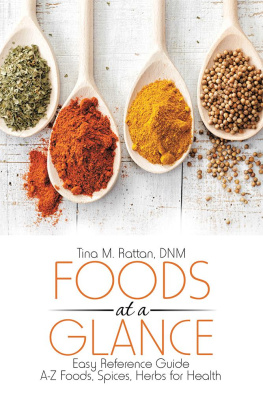

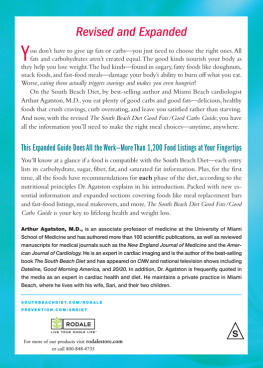

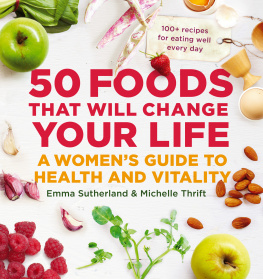
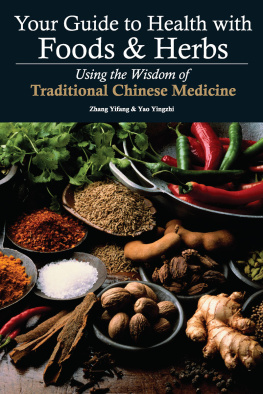
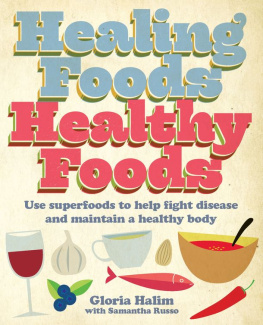
 Adzuki (Aduki) Beans *Propertiesdiuretic, detoxifying *High in vitamin B9 (folate), fiber, manganese *Low in fat, cholesterol, sodium *Contains vitamins B1 (thiamine), B2 (riboflavin), B3 (niacin), B5 (pantothenic acid), B6 (pyridoxine), protein, calcium, iron, magnesium, phosphorus, potassium, zinc, copper, manganese, molybdenum, Omega-6 fatty acids Beneficial Effects *stabilizes cholesterol *beneficial for heart health *beneficial for weight loss *helps prevent birth defects *boosts bone health *aids in digestion *beneficial for energy *regulates blood pressure *helps detoxify the body/beneficial for the liver Possible Adverse Effects *adzuki beans are not known as an allergenic food.
Adzuki (Aduki) Beans *Propertiesdiuretic, detoxifying *High in vitamin B9 (folate), fiber, manganese *Low in fat, cholesterol, sodium *Contains vitamins B1 (thiamine), B2 (riboflavin), B3 (niacin), B5 (pantothenic acid), B6 (pyridoxine), protein, calcium, iron, magnesium, phosphorus, potassium, zinc, copper, manganese, molybdenum, Omega-6 fatty acids Beneficial Effects *stabilizes cholesterol *beneficial for heart health *beneficial for weight loss *helps prevent birth defects *boosts bone health *aids in digestion *beneficial for energy *regulates blood pressure *helps detoxify the body/beneficial for the liver Possible Adverse Effects *adzuki beans are not known as an allergenic food.